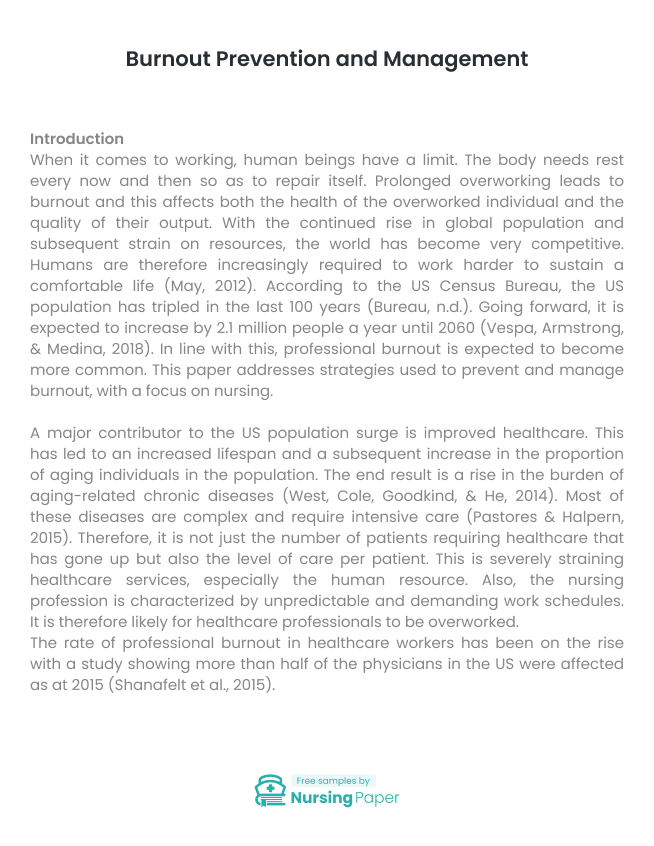1. Bureau, U. C. (n.d.). Population and housing unit estimates datasets. Retrieved from https://www.census.gov/programs-surveys/popest/data/data-sets.html
2. Cañadas-De la Fuente, G. A., Vargas, C., San Luis, C., García, I., Cañadas, G. R., & De la Fuente, E. I. (2015). Risk factors and prevalence of burnout syndrome in the nursing profession. International Journal of Nursing Studies, 52(1), 240–249. https://doi.org/10.1016/j.ijnurstu.2014.07.001
3. Fumis, R. R. L., Junqueira Amarante, G. A., de Fátima Nascimento, A., & Vieira Junior, J. M. (2017). Moral distress and its contribution to the development of burnout syndrome among critical care providers. Annals of Intensive Care, 7(1), 71. https://doi.org/10.1186/s13613-017-0293-2
4. Krasner, M. S., Epstein, R. M., Beckman, H., Suchman, A. L., Chapman, B., Mooney, C. J., & Quill, T. E. (2009). Association of an educational program in mindful communication with burnout, empathy, and attitudes among primary care physicians. JAMA, 302(12), 1284. https://doi.org/10.1001/jama.2009.1384
5. May, J. F. (2012). World Population Policies: Their Origin, Evolution, and Impact. New York, NY: Springer Science & Business Media.
6. Pastores, S. M., & Halpern, N. A. (2015). Insights into intensive care unit bed expansion in the United States. National and regional analyses. American Journal of Respiratory and Critical Care Medicine, 191(4), 365–366. https://doi.org/10.1164/rccm.201501-0043ED
7. Shanafelt, T. D., Hasan, O., Dyrbye, L. N., Sinsky, C., Satele, D., Sloan, J., & West, C. P. (2015). Changes in burnout and satisfaction with work-life balance in physicians and the general us working population between 2011 and 2014. Mayo Clinic Proceedings, 90(12), 1600–1613. https://doi.org/10.1016/j.mayocp.2015.08.023
8. Vespa, J., Armstrong, D. M., & Medina, L. (2018). Demographic turning points for the United States: population projections for 2020 to 2060 population estimates and projections current population reports. Retrieved from https://www.census.gov/content/dam/Census/library/publications/2018/demo/P25_1144.pdf
9. West, L. A., Cole, S., Goodkind, D., & He, W. (2014). 65+ in the United States: 2010. Retrieved from https://www.census.gov/content/dam/Census/library/publications/2014/demo/p23-212.pdf

The download will start shortly.



 Subject:
Subject:
 Number of pages: 10
Number of pages: 10